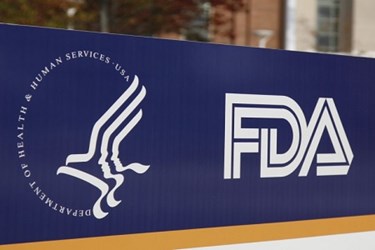FDA Clarifies Use Of Real-World Evidence In Regulatory Decision-Making
By Jof Enriquez,
Follow me on Twitter @jofenriq

The U.S. Food and Drug Administration (FDA) has issued draft guidance that clarifies how it intends to evaluate real-world evidence (RWE) to support regulatory decisions.
Similar to how traditional clinical trials provide valid scientific evidence to determine the safety and effectiveness of a medical device, FDA believes that real-world data generated in the course of routine clinical care and patient management can potentially meet regulatory standards.
The agency previously confirmed that RWE will be a critical source of information under a National Evaluation System for Medical Devices, which is in the works. FDA Commissioner Dr. Robert Califf and CDRH (Center for Devices & Radiological Health) Director Dr. Jeffrey Shuren said last month "clinically based data sources, such as registries, electronic health records (EHRs), and claims data, could potentially reduce the burdens of obtaining appropriate evidence across the life cycle of a device."
Echoing some industry sentiments, the non-profit organization Bipartisan Policy Center (BPC) had published a report calling on FDA to clarify how it intends to apply RWE in premarket and postmarket regulatory decisions.
“Sponsors and investigators would pursue the use of real-world evidence to augment and support clinical trials and post-marketing commitments if there were more clarity from the FDA regarding the types of real-world evidence that would be accepted for various decisions, and the methods required to establish confidence in analyses using real-world data,” stated the group.
In the issued draft guidance, Use of Real-World Evidence to Support Regulatory Decision-Making for Medical Devices, FDA addresses these concerns.
The agency defines real-world evidence as evidence derived from the aggregation and analysis of real-world data (RWD) elements sourced outside traditional clinical trials, which include: large simple trials, or pragmatic clinical trials, prospective observational or registry studies, retrospective database studies, case reports, administrative and healthcare claims, electronic health records, data obtained as part of a public health investigation or routine public health surveillance, and registries (e.g., device, procedural, or disease registries), and also from electronic systems used in health care delivery, data contained within medical devices, and/or in tracking patient experience during care, including in home-use settings.
RWD and RWE could constitute valid scientific evidence, FDA says, if they meet standards of relevance and reliability.
Relevance can be assessed either prior to a regulatory submission, such as via the pre-submission process, or during the regulatory review process. Factors FDA will consider to evaluate relevance include (but are not limited to): the representativeness of the device use in a real-world population, validation protocol, and whether the RWD contains elements to capture specific device identification information (e.g., unique device identifier).
Reliability will be determined based on how the data were collected (data accrual), whether the data collected are complete, accurate, and adequate for answering the question at hand (data adequacy), and whether the people and processes in place during data collection and analysis provide adequate assurance that bias is minimized and data quality and integrity are sufficient (data assurance).
According to RAPS, FDA considers real-world evidence potentially useful in understanding medical device performance at different points in the device's life cycle, including but not limited to:
- generation of hypotheses to be tested in a prospective clinical study
- as a historical control, a prior in a Bayesian trial, or as one source of data in a hierarchical model or a hybrid data synthesis
- in a setting where a registry or some other systematic data collection mechanism exists and the data can potentially be used as a concurrent control group or as a mechanism for collecting data related to a clinical study to support device approval or clearance
- in some circumstances where real-world use of a device is in a broader patient population or wider set of circumstances than described in the device labeling, it may be possible to use existing systematically collected real-world data to expand the labeling
- for public health surveillance efforts and to understand the evolution of the benefits and risks of devices after they have been approved or cleared in the United States
The draft guidance also clarifies when an Investigational Device Exemption (IDE) may be needed to prospectively collect and use RWD for purposes of determining the safety and effectiveness of a device.
FDA also gives generalized case samples where real-world evidence was utilized to come up with a regulatory decisions, such as expanded indications for use.
One such example was a study using national registry data that was initiated with an approved IDE application, since the study focused on a use of the unspecified Class III device that was not within the approved indications for use. FDA says it hopes that the data may address critical safety questions related to the use of these devices and may be of sufficient quality to help support labeling changes or other regulatory decisions for this device.
Another example was a patient registry that collected data to address safety concerns stemming from a series of postmarket surveillance study orders from FDA, involving an unidentified Class II device made by different manufacturers.
At a meeting held in May, FDA submitted a high-level description of the RWE user fee proposal, which includes a $10 million allocation to establish and operate a coordinating center, projects to improve RWE data sources and increase their use, and assignment of 15 full-time employees who will develop and implement the framework for using RWE for premarket decision-making by supporting the work of the coordinating center, as well as reviewing and analyzing the data submitted to support a premarket decision.
